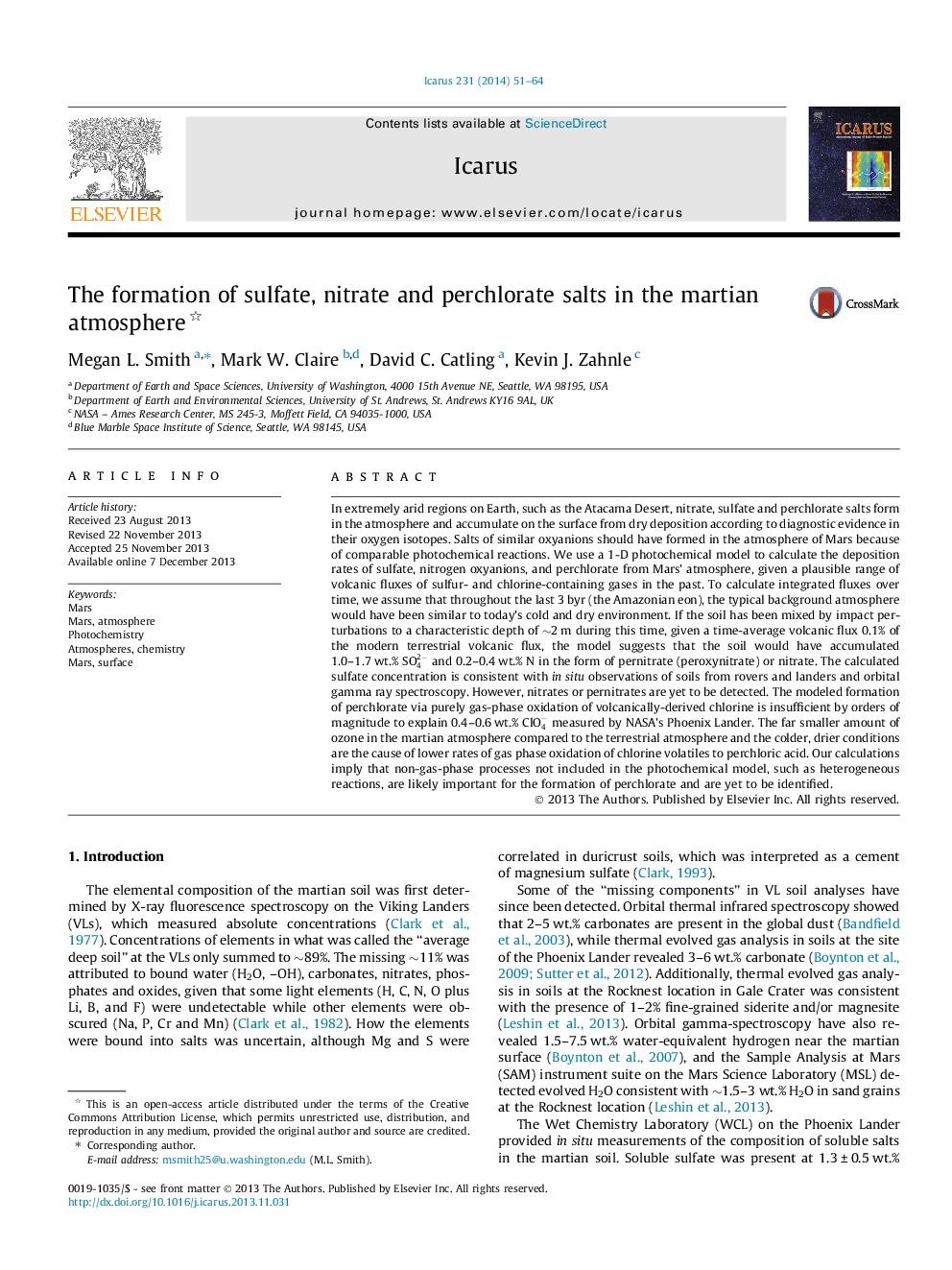| Article ID | Journal | Published Year | Pages | File Type |
|---|---|---|---|---|
| 8138560 | Icarus | 2014 | 14 Pages |
Abstract
In extremely arid regions on Earth, such as the Atacama Desert, nitrate, sulfate and perchlorate salts form in the atmosphere and accumulate on the surface from dry deposition according to diagnostic evidence in their oxygen isotopes. Salts of similar oxyanions should have formed in the atmosphere of Mars because of comparable photochemical reactions. We use a 1-D photochemical model to calculate the deposition rates of sulfate, nitrogen oxyanions, and perchlorate from Mars' atmosphere, given a plausible range of volcanic fluxes of sulfur- and chlorine-containing gases in the past. To calculate integrated fluxes over time, we assume that throughout the last 3Â byr (the Amazonian eon), the typical background atmosphere would have been similar to today's cold and dry environment. If the soil has been mixed by impact perturbations to a characteristic depth of â¼2Â m during this time, given a time-average volcanic flux 0.1% of the modern terrestrial volcanic flux, the model suggests that the soil would have accumulated 1.0-1.7Â wt.% SO42- and 0.2-0.4Â wt.% N in the form of pernitrate (peroxynitrate) or nitrate. The calculated sulfate concentration is consistent with in situ observations of soils from rovers and landers and orbital gamma ray spectroscopy. However, nitrates or pernitrates are yet to be detected. The modeled formation of perchlorate via purely gas-phase oxidation of volcanically-derived chlorine is insufficient by orders of magnitude to explain 0.4-0.6Â wt.% ClO4- measured by NASA's Phoenix Lander. The far smaller amount of ozone in the martian atmosphere compared to the terrestrial atmosphere and the colder, drier conditions are the cause of lower rates of gas phase oxidation of chlorine volatiles to perchloric acid. Our calculations imply that non-gas-phase processes not included in the photochemical model, such as heterogeneous reactions, are likely important for the formation of perchlorate and are yet to be identified.
Related Topics
Physical Sciences and Engineering
Earth and Planetary Sciences
Space and Planetary Science
Authors
Megan L. Smith, Mark W. Claire, David C. Catling, Kevin J. Zahnle,
